genealogy
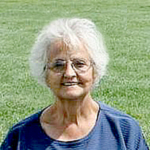
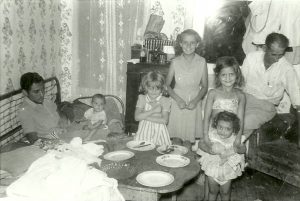 My aunt, Sandy Pattan is the youngest child of my grandparents, George and Hattie Byer. Being the youngest, gave her a unique perspective concerning her family. The rest of the siblings grew up around each other, so their lives didn’t really seem like anything special. They were kids, doing kid things, but Aunt Sandy was born just two years before her eldest sibling, Evelyn Hushman was married. Her first niece, Susie Young was born just after Aunt Sandy turned three, making her an aunt for the first of many times. As she grew up, her siblings were getting married, working at jobs, and going to school.
My aunt, Sandy Pattan is the youngest child of my grandparents, George and Hattie Byer. Being the youngest, gave her a unique perspective concerning her family. The rest of the siblings grew up around each other, so their lives didn’t really seem like anything special. They were kids, doing kid things, but Aunt Sandy was born just two years before her eldest sibling, Evelyn Hushman was married. Her first niece, Susie Young was born just after Aunt Sandy turned three, making her an aunt for the first of many times. As she grew up, her siblings were getting married, working at jobs, and going to school.
Aunt Sandy had a tendency to catch just about every bug that went through, so she also spent more time with her mom during those days when she was sick. That gave her access to the many family stories that her mom told, when they were still fresh on Grandma’s mind. The stores Grandma told were also from a unique perspective these days…one of being there during times we would classify as history. Days of Cowboys and Indians were basically just another day for Grandma, and she made the stories come alive to her youngest child. Of course, being sick was not a blessing, but those stories were…both to Aunt Sandy, and now to any of her family who want to hear them.
I love talking to Aunt Sandy on the phone, because She always has so many interesting things to say. She remembers all those stories, and is happy to share them, and I love hearing them. Her parents were born in the late 1800s and early 1900s. The American Indian Wars raged in this country from 1609 to 1924…probably one of the longest wars ever. Many of us think of growing up in times of wars in other nations, in which our young men might have to fight, as being scary. We think of times like the current unrest as scary. So, imagine having 315 years of wars on our own soil. Of course, none of us would live through all of that period, but many people lived with it for their entire lifetimes. It was always there. It was part of everyday normal life. That was the world my grandparents grew up in. Those of us born after 1924 would really not know what that was like…living with the fear of war that could erupt right in front of us at any moment. Aunt Sandy, like me, loves history very much. It’s like a time machine, giving us a really interesting glimpse into the past. That is probably why we can talk about it for hours.
I’m sure that as a little girl, she loved hearing about things her older siblings were doing. I’m sure it all seemed very glamorous to her. She did get to do some cool things as the youngest, like take a train to Superior, Wisconsin with her mom to visit my mom and her sister, Collene Spencer. Since Bob and I traveled by train a while back, I can relate to that trip. Things were quite likely much different on her trip, because the more 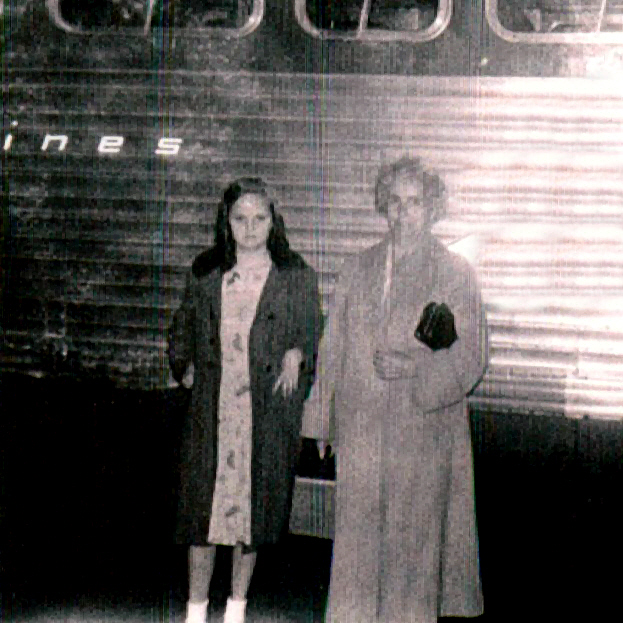

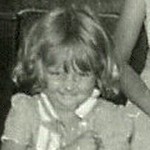 modern trains, while not like flying, are more comfortable than their predecessors. To ride miles and miles sitting up straight would be awful. Aunt Sandy has lived an interesting life, and I enjoy talking to her about it. Today is Aunt Sandy’s 75th birthday. I feel very blessed to have her still with us. Happy birthday Aunt Sandy!! Have a great day!! We love you!!
modern trains, while not like flying, are more comfortable than their predecessors. To ride miles and miles sitting up straight would be awful. Aunt Sandy has lived an interesting life, and I enjoy talking to her about it. Today is Aunt Sandy’s 75th birthday. I feel very blessed to have her still with us. Happy birthday Aunt Sandy!! Have a great day!! We love you!!
 I was listening to a book recently about shipwrecks on the Great Lakes and a thought came to my mind that really made me quite sad…though definitely not as sad as when I consider the loss of life that took place in those many wrecks. My Uncle Bill Spencer told me years ago that the Great Lakes are littered with ships that were lost in some of the worst storms on the lakes. In fact, he told me that if you fly over Lake Superior, which is the lake near where he lived most of his life, you could actually see the ships on the bottom of the lake. That thought always made me want to charter a small plane and go see for myself.
I was listening to a book recently about shipwrecks on the Great Lakes and a thought came to my mind that really made me quite sad…though definitely not as sad as when I consider the loss of life that took place in those many wrecks. My Uncle Bill Spencer told me years ago that the Great Lakes are littered with ships that were lost in some of the worst storms on the lakes. In fact, he told me that if you fly over Lake Superior, which is the lake near where he lived most of his life, you could actually see the ships on the bottom of the lake. That thought always made me want to charter a small plane and go see for myself.
Shipwrecks aside, the book told of the different reasons that ships went down, and how the safety regulations were often extremely inadequate. From not enough lifeboats, to lifejackets that were stored to far from the posts to be reached, to companies who regularly pressured their 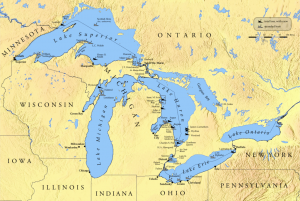 captains to take their ships out in terrible storms, the life of the sea was very dangerous. Of course, there are still shipwrecks today, although the last sinking on the Great Lakes was on November 10, 1975, when the SS Edmond Fitzgerald went down in a horrible November gale. With more recent safety regulations, the Great Lakes have been able to stave off shipwrecks in the last 45 years.
captains to take their ships out in terrible storms, the life of the sea was very dangerous. Of course, there are still shipwrecks today, although the last sinking on the Great Lakes was on November 10, 1975, when the SS Edmond Fitzgerald went down in a horrible November gale. With more recent safety regulations, the Great Lakes have been able to stave off shipwrecks in the last 45 years.
Still, it is not the number of wrecks, or even the lives lost, that has me considering a loss that is even greater…and least from the viewpoint of genealogy. As I was listening to the book, I heard that in several situations, they could not get an exact count of the lost, even if they technically knew how many were on board. The ships manifests had gone down with the ship. My mind raced. If there were people on those ships who had 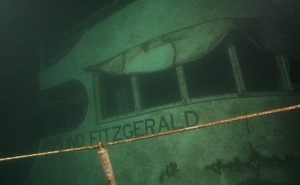 immigrated here, and their names were not recorded somewhere, they could virtually disappear and along with them, their line in the family tree they came from. I know that the many genealogy fanatics, like me, would just cringe at the thought of one of our ancestors simply vanishing. There are so many ways for a family line to get muddied. Name changes, marriages, undocumented deaths, as well as those who just left without telling anyone, are all among the lost ones, but I hadn’t considered those who meant to stay in touch, but who were never heard from, and their family back in Europe or wherever they came from, had no idea what happened. All they knew was that they were lost forever.
immigrated here, and their names were not recorded somewhere, they could virtually disappear and along with them, their line in the family tree they came from. I know that the many genealogy fanatics, like me, would just cringe at the thought of one of our ancestors simply vanishing. There are so many ways for a family line to get muddied. Name changes, marriages, undocumented deaths, as well as those who just left without telling anyone, are all among the lost ones, but I hadn’t considered those who meant to stay in touch, but who were never heard from, and their family back in Europe or wherever they came from, had no idea what happened. All they knew was that they were lost forever.
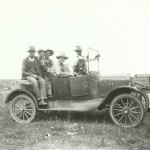
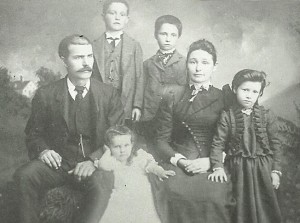 Most national days that are designed to celebrate an activity or group, are just another day to most of us, but for me, and for many other family history buffs, Genealogy Day is different. I’m sure everybody has a day of celebration that hits home to them, but I know of so many people who are dedicated to tracing their family history. I’m sure everyone has different reasons for tracing their history…from adoptees finding their parents, to simply wanting to know which historical figures we are related to, many people are curious. Those of us who have begun this journey, find ourselves losing track of time as were research the proof of relationship between us and our ancestors. We get started, and the addiction sets in. It’s like a good book that we simply can’t put down.
Most national days that are designed to celebrate an activity or group, are just another day to most of us, but for me, and for many other family history buffs, Genealogy Day is different. I’m sure everybody has a day of celebration that hits home to them, but I know of so many people who are dedicated to tracing their family history. I’m sure everyone has different reasons for tracing their history…from adoptees finding their parents, to simply wanting to know which historical figures we are related to, many people are curious. Those of us who have begun this journey, find ourselves losing track of time as were research the proof of relationship between us and our ancestors. We get started, and the addiction sets in. It’s like a good book that we simply can’t put down.
All too often, by the time we think about researching our ancestors, any of our family members who might have any pertinent information are already gone. We find ourselves disgusted that we weren’t interested before that point. Of course, by then it is too late for us, unless someone else took the time to ask the questions, and record the information. That is where the family genealogists come into play. If you are blessed, you have a parent or grandparent that you can ask or who has written it all down for you, so you don’t end up in the sad situation of finding that you are hitting a wall in your research. Those of us who find ourselves in the self-appointed position of being the family historian or family genealogist are not sorry that this is what we do. It is exciting to come across an old picture that we never thought we would find, or a military draft registration card that contains the signature of our ancestor. Those things are like striking it rich in a gold mine.
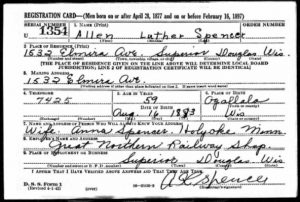
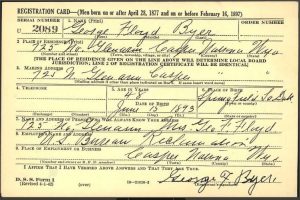 People are busy, and we just don’t have a lot of time to dig through the past, but every now and then, people who happen to have a bit more time start digging around and sometimes find out the most fascinating facts about where their forefathers came from and what kind of people they were. Most people are a little bit curious, when someone brings the information to their attention, but some simply don’t think they care. I find the latter group to be the most sad. They simply don’t understand that they are missing out…until it’s too late.
People are busy, and we just don’t have a lot of time to dig through the past, but every now and then, people who happen to have a bit more time start digging around and sometimes find out the most fascinating facts about where their forefathers came from and what kind of people they were. Most people are a little bit curious, when someone brings the information to their attention, but some simply don’t think they care. I find the latter group to be the most sad. They simply don’t understand that they are missing out…until it’s too late.
Keeping track of one’s family lines has been going on for centuries…hence the wealth of information that is out there, but never has the information been easier to access that it is today. Computers, cell phone apps, digital pictures all make it easier to share what one has with another, without losing the treasure you have. In Western societies, genealogy was especially important to royalty, who used it to decide who was of noble descent and who was not, as well as who had the right to rule which geographical area, but I think everyone wants to kind a link to a royal line. The idea that our grandparents might be royalty is an exciting one…even if our royal family will never know who we are.
Genealogy Day was created in 2013, by Christ Church, United Presbyterian and Methodist in Limerick, Ireland to help celebrate the church’s 200th anniversary. For this day, Christ Church brought together local family history records not only from its own combined churches, but also from the area’s Church of Ireland parishes, including the Religious Society if Friends in Ireland (Quaker) and the Church of Latter Day Saints (Mormon). The people in attendance could then use the amassed marriage and baptism records dating back to the early 
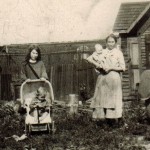 1800s, such as Limerick Methodist Registers and Limerick Presbyterian Registers, to find out about their great-great-grandparents. The idea was so popular that it was repeated for the next two consecutive years and has inspired many people to take a look into their family tree to find out a bit more about where they come from. I think that Genealogy Day is a perfect day to dip your toe in the Genealogical waters, and see what you can find out about your own family. You might be surprised.
1800s, such as Limerick Methodist Registers and Limerick Presbyterian Registers, to find out about their great-great-grandparents. The idea was so popular that it was repeated for the next two consecutive years and has inspired many people to take a look into their family tree to find out a bit more about where they come from. I think that Genealogy Day is a perfect day to dip your toe in the Genealogical waters, and see what you can find out about your own family. You might be surprised.
 Recently, I found out that my family is related to Alvin Cullum York, who was one of the most decorated United States Army soldiers of World War I. York is my 8th cousin once removed on my dad’s side of the family. York received the Medal of Honor for leading an attack on a German machine gun nest, taking 35 machine guns, killing at least 25 enemy soldiers, and capturing 132. York’s Medal of Honor action occurred during the portion of the Meuse-Argonne Offensive in France, which was led by the United States, and was intended to breach the Hindenburg line and force the Germans to surrender.
Recently, I found out that my family is related to Alvin Cullum York, who was one of the most decorated United States Army soldiers of World War I. York is my 8th cousin once removed on my dad’s side of the family. York received the Medal of Honor for leading an attack on a German machine gun nest, taking 35 machine guns, killing at least 25 enemy soldiers, and capturing 132. York’s Medal of Honor action occurred during the portion of the Meuse-Argonne Offensive in France, which was led by the United States, and was intended to breach the Hindenburg line and force the Germans to surrender.
York was born in rural Tennessee on December 13, 1887, the third of eleven children of William and Mary (Brooks) York. His parents farmed, and his father worked as a blacksmith. The York children had minimal schooling because they helped provide for the family, which included hunting, fishing, and hiring out as laborers. After the death of York’s father, he assisted in caring for his younger siblings, and found work as a logger and on construction crews. York wen to church on a regular basis, but he also drank heavily and had a reputation for fistfighting. In 1914 he had a conversion experience, and vowed to improve. He became even more devoted to the Church of Christ in Christian Union.
Upon being drafted into World War I, York initially claimed conscientious objector status on the grounds that his denomination forbade violence. It was because of his internal struggle about whether or not war was the same 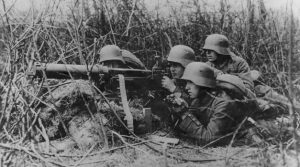 as murder. York prayed about it for the better part of a whole night, before feeling led to proceed with his military assignment. York joined the 82nd Division as an infantry private, and went to France in 1918. He was a part of the group of soldiers know as dough boys. In October 1918, York was promoted to corporal, as one of a group of 17 soldiers assigned to infiltrate German lines and silence a machine gun position. After the American patrol had captured a large group of enemy soldiers, German small arms fire killed six Americans and wounded three. York was the highest ranking of those still able to fight, so he took charge. While his men guarded the prisoners, York attacked the machine gun position, dispatching several German soldiers with his rifle. By the time six Germans charged him with bayonets he was out of rifle ammunition, so he drew his pistol and shot them all. The German officer responsible for the machine gun position had emptied his pistol while firing at York, but missed. This officer then offered to surrender, and York accepted. York and his men marched back to their unit’s command post with more than 130 prisoners. York was immediately promoted to sergeant, and was awarded the Distinguished Service Cross. After further investigation the award was upgraded to the Medal of Honor. York became a national hero and international celebrity. He also received decorations from several foreign countries, including France, Italy, and Montenegro.
as murder. York prayed about it for the better part of a whole night, before feeling led to proceed with his military assignment. York joined the 82nd Division as an infantry private, and went to France in 1918. He was a part of the group of soldiers know as dough boys. In October 1918, York was promoted to corporal, as one of a group of 17 soldiers assigned to infiltrate German lines and silence a machine gun position. After the American patrol had captured a large group of enemy soldiers, German small arms fire killed six Americans and wounded three. York was the highest ranking of those still able to fight, so he took charge. While his men guarded the prisoners, York attacked the machine gun position, dispatching several German soldiers with his rifle. By the time six Germans charged him with bayonets he was out of rifle ammunition, so he drew his pistol and shot them all. The German officer responsible for the machine gun position had emptied his pistol while firing at York, but missed. This officer then offered to surrender, and York accepted. York and his men marched back to their unit’s command post with more than 130 prisoners. York was immediately promoted to sergeant, and was awarded the Distinguished Service Cross. After further investigation the award was upgraded to the Medal of Honor. York became a national hero and international celebrity. He also received decorations from several foreign countries, including France, Italy, and Montenegro.
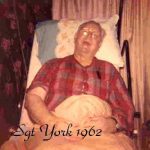
To reward their hero, some businessmen in Tennessee organized the purchase of a farm for York, his new wife, and their growing family. York later formed a charitable foundation to improve educational opportunities for children in rural Tennessee, as a way of giving back o his home state. In the 1930s and 1940s, York worked as a project superintendent for the Civilian Conservation Corps and managed construction of the Byrd Lake reservoir at Cumberland Mountain State Park, after which he served for several years as park superintendent. In his later years, York was confined to bed by health problems. He died in Nashville, Tennessee, on September 2, 1964 and was buried at Wolf River Cemetery in his hometown of Pall Mall.
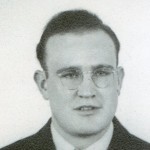
 My Uncle Bill Spencer discovered genealogy by chance, when he came across a little black book that his mother, Anna Schumacher Spencer had. When he asked about it, she showed it to him. In the book was all she knew about her family’s history. I don’t know if my grandmother had an interest in the family history, but very little time to pursue it, or if it was passed down to her by someone else. Whatever the case may be, Uncle Bill was hooked on the family history from that time forward…an amazing feat for an 8 year old boy. It was a project he spent serious time on for all of his pre-dementia life. The family history and all the possible information were two things that were never far from his thoughts. His mind was obsessed with it.
My Uncle Bill Spencer discovered genealogy by chance, when he came across a little black book that his mother, Anna Schumacher Spencer had. When he asked about it, she showed it to him. In the book was all she knew about her family’s history. I don’t know if my grandmother had an interest in the family history, but very little time to pursue it, or if it was passed down to her by someone else. Whatever the case may be, Uncle Bill was hooked on the family history from that time forward…an amazing feat for an 8 year old boy. It was a project he spent serious time on for all of his pre-dementia life. The family history and all the possible information were two things that were never far from his thoughts. His mind was obsessed with it.
The Spencer Family History researched by my Uncle Bill without the benefit of modern computer data assistance, spanned some 80+ years. He worked on it because of his own curiosity, at first. He traveled to spend time in court records rooms, searching for clues. He walked countless cemeteries, looking for the graves of his ancestors. He meticulously documented every picture, every find, and every news article he came across. He talked to aunts, uncles, and family friends, and wrote down their stories. He wanted to know everything…not just names and faces, but who these people were, and what their lives were about.
At some point, Uncle Bill’s obsession became Uncle Bill’s gift. He wanted to preserve the Spencer Family History to be passed down to all of the children of his multi-great grandparents. It was his legacy. He had such great love for the past, and really enjoyed researching history and ancestry. And his plan was to get the family history out to as many family members as he could. I have been amazed at how far it has gone across the United States and probably the world. I have come across a number of people who have all or part of Uncle Bill’s history. He made copies of it for anyone who asked, or showed an interest. These were all done by hand. Although, he did use a copier in the later years. His was a work of love for the future generations, who might 
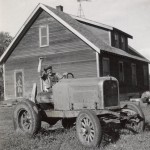 find an interest someday, even if they didn’t seem interested now. While Uncle Bill’s mission seemed very much like an obsession, it was really a gift obsession. He was obsessed about giving it away. Few people have ever worked a lifetime on a gift that would be given away to people as yet unborn and unknown. It was a gift than was priceless to the receiver. Uncle Bill had given the very best of himself and poured it into the family history, and I for one feel very blessed to receive Uncle Bill’s gift. Today is my Uncle Bill’s 96th birthday. Happy birthday Uncle Bill!! Have a great day!! We love you!!
find an interest someday, even if they didn’t seem interested now. While Uncle Bill’s mission seemed very much like an obsession, it was really a gift obsession. He was obsessed about giving it away. Few people have ever worked a lifetime on a gift that would be given away to people as yet unborn and unknown. It was a gift than was priceless to the receiver. Uncle Bill had given the very best of himself and poured it into the family history, and I for one feel very blessed to receive Uncle Bill’s gift. Today is my Uncle Bill’s 96th birthday. Happy birthday Uncle Bill!! Have a great day!! We love you!!
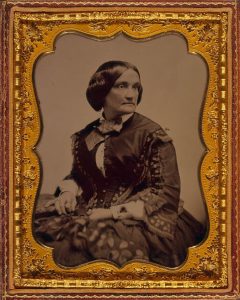 The Ambrotype (from the Ancient Greek words for immortal or impression) or Amphitype, also known as a collodion positive in England, is a positive photograph on glass made by a variant of the wet plate collodion process. Like a print on paper, it is viewed by reflected light. Like the Daguerreotype, which it replaced, and like the prints produced by a Polaroid camera, each is a unique original that could only be duplicated by using a camera to copy it.
The Ambrotype (from the Ancient Greek words for immortal or impression) or Amphitype, also known as a collodion positive in England, is a positive photograph on glass made by a variant of the wet plate collodion process. Like a print on paper, it is viewed by reflected light. Like the Daguerreotype, which it replaced, and like the prints produced by a Polaroid camera, each is a unique original that could only be duplicated by using a camera to copy it.
The Ambrotype was introduced in the 1850s. Then, during the 1860s it was replaced by the tintype, a similar photograph on thin black-lacquered iron, hard to distinguish from an Ambrotype, if under glass. It is quite the process. One side of a clean glass plate was coated with a thin layer of iodized collodion; which is a flammable, syrupy solution of pyroxylin (also known as “nitrocellulose,” “cellulose nitrate,” “flash paper,” and “gun cotton”) in ether and alcohol. The glass is then dipped in a silver nitrate solution. The plate was exposed in the camera while still wet. Exposure times varied from five to sixty seconds or more depending on the brightness of the lighting and the speed of the camera lens. The plate was then developed and fixed. The resulting negative, when viewed by reflected light against a black background, appears to be a positive image: the clear areas look black, and the exposed, opaque areas appear relatively light. This effect was integrated by backing the plate with black velvet; by taking the 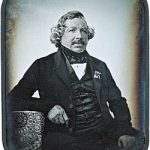 picture on a plate made of dark reddish-colored glass (the result was called a ruby Ambrotype); or by coating one side of the plate with black varnish. Either the emulsion side or the bare side could be coated: if the bare side was blackened, the thickness of the glass added a sense of depth to the image. In either case, another plate of glass was put over the fragile emulsion side to protect it, and the whole was mounted in a metal frame and kept in a protective case. In some instances the protective glass was cemented directly to the emulsion, generally with a balsam resin. This protected the image well but tended to darken it. Ambrotypes were sometimes hand-tinted; untinted ambrotypes are monochrome, gray or tan in their lightest areas.
picture on a plate made of dark reddish-colored glass (the result was called a ruby Ambrotype); or by coating one side of the plate with black varnish. Either the emulsion side or the bare side could be coated: if the bare side was blackened, the thickness of the glass added a sense of depth to the image. In either case, another plate of glass was put over the fragile emulsion side to protect it, and the whole was mounted in a metal frame and kept in a protective case. In some instances the protective glass was cemented directly to the emulsion, generally with a balsam resin. This protected the image well but tended to darken it. Ambrotypes were sometimes hand-tinted; untinted ambrotypes are monochrome, gray or tan in their lightest areas.
The Ambrotype was based on the wet plate collodion process invented by Frederick Scott Archer. Ambrotypes were deliberately underexposed negatives made by that process and optimized for viewing as positives instead. In the United States, ambrotypes first came into use in the early 1850s. In 1854, James Ambrose Cutting of 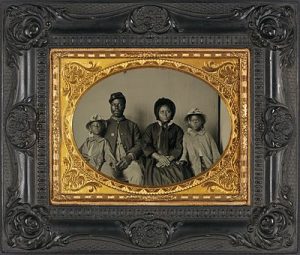 Boston took out several patents relating to the process. He may be responsible for coining the term “Ambrotype.” Ambrotypes were much less expensive to produce than daguerreotypes, the medium that predominated when they were introduced, and did not have the bright mirror-like metallic surface that could make daguerreotypes troublesome to view and which some people disliked. An Ambrotype, however, appeared dull and drab when compared with the brilliance of a well-made and properly viewed daguerreotype. It’s amazing to me that photography could be so complicated…especially when you think that these days, everything is digital, and errors can easily be fixed with Photoshop.
Boston took out several patents relating to the process. He may be responsible for coining the term “Ambrotype.” Ambrotypes were much less expensive to produce than daguerreotypes, the medium that predominated when they were introduced, and did not have the bright mirror-like metallic surface that could make daguerreotypes troublesome to view and which some people disliked. An Ambrotype, however, appeared dull and drab when compared with the brilliance of a well-made and properly viewed daguerreotype. It’s amazing to me that photography could be so complicated…especially when you think that these days, everything is digital, and errors can easily be fixed with Photoshop.
 As this day has approached, I have found it very hard to believe that my Uncle Bill Spencer, my dad’s brother, is turning 95 years old today. I remember the uncle from my childhood, full of life, and exciting stories. He was the man who taught me the game of Cribbage and challenged me to try to beat him. He never gave me the game, but rather made it a true victory when I was able to beat him. He never made me feel like a failure when I lost either, but rather told me that every game I played made me a better player, and he was right. I loved the times we had together playing cribbage. It will always be one of my favorite memories of my uncle. Over the years, we tried in vain to figure out a way to play long distance. That was one challenge that beat us. I suppose that in the age of computers, we might have found a way.
As this day has approached, I have found it very hard to believe that my Uncle Bill Spencer, my dad’s brother, is turning 95 years old today. I remember the uncle from my childhood, full of life, and exciting stories. He was the man who taught me the game of Cribbage and challenged me to try to beat him. He never gave me the game, but rather made it a true victory when I was able to beat him. He never made me feel like a failure when I lost either, but rather told me that every game I played made me a better player, and he was right. I loved the times we had together playing cribbage. It will always be one of my favorite memories of my uncle. Over the years, we tried in vain to figure out a way to play long distance. That was one challenge that beat us. I suppose that in the age of computers, we might have found a way.
Uncle Bill is a unique kind of person, in that he found something he was interested in when he was just an 8 year old boy, and he never lost his passion for it. For Uncle Bill, that passion was for his 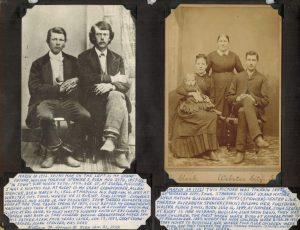 family genealogy. As a young boy, he saw a little black book his mother was working on. It was a simple record book of the family members she knew of at the time, but for Uncle Bill, it was a challenge. He was hooked, and for as long has his memory lasted, Uncle Bill continued digging for more information. His work would take him on many trips to pour through libraries, county records, state records, and to walk miles and miles of cemeteries. He had a need to find out about his past. He found himself feeling annoyed when people didn’t properly mark photos and documents, with important information, such as who was in the picture, when it was taken, and what was going on. So much information is so easily lost because someone didn’t take a moment to properly document a picture. Since I have looked over all his work, I can understand his frustration, because there are pictures that we know the relationship of, but not the name of the person, and some people we don’t know anything about at all. And no way to find out. History lost…maybe forever.
family genealogy. As a young boy, he saw a little black book his mother was working on. It was a simple record book of the family members she knew of at the time, but for Uncle Bill, it was a challenge. He was hooked, and for as long has his memory lasted, Uncle Bill continued digging for more information. His work would take him on many trips to pour through libraries, county records, state records, and to walk miles and miles of cemeteries. He had a need to find out about his past. He found himself feeling annoyed when people didn’t properly mark photos and documents, with important information, such as who was in the picture, when it was taken, and what was going on. So much information is so easily lost because someone didn’t take a moment to properly document a picture. Since I have looked over all his work, I can understand his frustration, because there are pictures that we know the relationship of, but not the name of the person, and some people we don’t know anything about at all. And no way to find out. History lost…maybe forever.
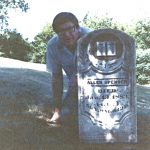 When my girls, Corrie Petersen and Amy Royce were in grade school, they had an assignment concerning their family history. My mom, Collene Spencer said I should get a hold of my Uncle Bill…his reputation as the family historian had preceded him. I called him, and he sent what was needed for their assignments. That was awesome, but it was not the end of the story. With Uncle Bill’s way of peaking my interest, I have picked up the torch and I am running with it. I pray that I can do him proud. Uncle Bill has dementia now, and doesn’t remember that he was working on the family history, Still, I pray that I, and others like me, can carry on his legacy for him, so that history will not be lost in this family. Today is Uncle Bill’s 95th birthday. Happy birthday Uncle Bill!! Have a great day!! We love you!!
When my girls, Corrie Petersen and Amy Royce were in grade school, they had an assignment concerning their family history. My mom, Collene Spencer said I should get a hold of my Uncle Bill…his reputation as the family historian had preceded him. I called him, and he sent what was needed for their assignments. That was awesome, but it was not the end of the story. With Uncle Bill’s way of peaking my interest, I have picked up the torch and I am running with it. I pray that I can do him proud. Uncle Bill has dementia now, and doesn’t remember that he was working on the family history, Still, I pray that I, and others like me, can carry on his legacy for him, so that history will not be lost in this family. Today is Uncle Bill’s 95th birthday. Happy birthday Uncle Bill!! Have a great day!! We love you!!
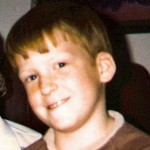 In the relatively short time that our family has really reconnected with our cousins on my dad’s side, I feel very blessed to have had the opportunity to get to know my cousin Shawn Fredrick. I have to say that his personality has been such a pleasant surprise. For some reason I always thought of Shawn as really shy and serious, but now I know that he has an amazing sense of humor, and a real talent for history, especially family history. I think that part is in his blood. His grandma, my Aunt Laura Spencer Fredrick, and his great uncle, my Uncle Bill Spencer, have been studying family history for a long time…as have his Uncle Dennis Fredrick, and his dad, Gene Fredrick, both of whom are my cousins, and of course, his older brother, Tim Fredrick. I’m sure that Shawn and Tim got into the history about the same time, with their dad’s interest in it, and he was helping Uncle Bill with copies, layouts, scanning, and researching. Nevertheless, once you start looking at family history, it is very easy to become additced to it…I should know.
In the relatively short time that our family has really reconnected with our cousins on my dad’s side, I feel very blessed to have had the opportunity to get to know my cousin Shawn Fredrick. I have to say that his personality has been such a pleasant surprise. For some reason I always thought of Shawn as really shy and serious, but now I know that he has an amazing sense of humor, and a real talent for history, especially family history. I think that part is in his blood. His grandma, my Aunt Laura Spencer Fredrick, and his great uncle, my Uncle Bill Spencer, have been studying family history for a long time…as have his Uncle Dennis Fredrick, and his dad, Gene Fredrick, both of whom are my cousins, and of course, his older brother, Tim Fredrick. I’m sure that Shawn and Tim got into the history about the same time, with their dad’s interest in it, and he was helping Uncle Bill with copies, layouts, scanning, and researching. Nevertheless, once you start looking at family history, it is very easy to become additced to it…I should know.
I find, the more I get to know Shawn, that we think a lot alike…especially politically, which I love, but for the sake of my friends who disagree with me politically, I won’t go into now. Nevertheless, I think Shawn and I have a similar sense of humor too, because we also seem to find the same things funny. Shawn likes trivia, which is, in my opinion, a lot of fun too. I love to see what might have happened on a certain day in history, or even just learn about unusual facts. I think Shawn is a lot like that too, because of the things he posts on Facebook. I really like the way Shawn explains the things he is telling you about. He is very thorough, and when he is done telling you the story, you really feel like you know what was going on. Not everyone has the ability to tell a story in a way that makes you feel like you are there too.
I think both Shawn and Tim are very intelligent men, and both are very excellent computer programmers, but they both also love woodworking, which is another thing that is in their genes, through their dad, Gene, grandfather Fritz Fredrick, and great grandfather, Allen Luther Spencer, and probably other people on the Fredrick side of the family too. Their dad made beautiful dressers, desks, and cabinets, and taught them how to 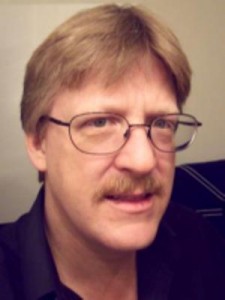 make them too. Still, I’m not sure that just anyone could learn that. I believe it takes a bit of inherited talent too. I am not sure that I could make anything that would look like it was anything much, and that is one area that Shawn and I differ greatly. Of course, not all of his projects are geared toward beauty, necessarily, some like the mirror that fell, are geared toward functionality, with a little humor mixed in, as you can see from Shawn’s comment about that project. “My mirror fell in the middle of the night and shattered so in the tradition of my father for sturdy building projects that never have to be fixed again, I just installed another one with drywall anchors rated at 60 pounds. Unless we have a 7.0 earthquake, it’s not coming down again in my lifetime” No, I’m sure it won’t Shawn. Like your brother said, “When Mt. Cheyenne suddenly and unexpectedly erupts and the pyroclastic flow brings down mirrors across the city, yours will be standing!” If you can pull that off, you are a great craftsman. Seriously though, Shawn is a very talented man, and I am proud to call him my cousin.
make them too. Still, I’m not sure that just anyone could learn that. I believe it takes a bit of inherited talent too. I am not sure that I could make anything that would look like it was anything much, and that is one area that Shawn and I differ greatly. Of course, not all of his projects are geared toward beauty, necessarily, some like the mirror that fell, are geared toward functionality, with a little humor mixed in, as you can see from Shawn’s comment about that project. “My mirror fell in the middle of the night and shattered so in the tradition of my father for sturdy building projects that never have to be fixed again, I just installed another one with drywall anchors rated at 60 pounds. Unless we have a 7.0 earthquake, it’s not coming down again in my lifetime” No, I’m sure it won’t Shawn. Like your brother said, “When Mt. Cheyenne suddenly and unexpectedly erupts and the pyroclastic flow brings down mirrors across the city, yours will be standing!” If you can pull that off, you are a great craftsman. Seriously though, Shawn is a very talented man, and I am proud to call him my cousin.

 Recently, my cousin, Shirley Cameron shared a post of Facebook about eye color. The post was simply about green eyes being rare, but Shirley posted that her eyes change color according to her moods, something that has to be more rare than green eyes. She stated that they change from blue to green to gray depending on the mood she is in. If they are blue she is happy, green she is really angry, and gray she is feeling pretty neutral. Now, I don’t know how many people out there have eyes that change color like that, but I suddenly found out that it tends to run in my family. I have always known that my own eyes change color like that, although I had not associated the changes with my moods before. That might be something to look into…no pun intended. My grandson, Caalab Royce has eyes that change color that way, but I think he is the only one of the kids.
Recently, my cousin, Shirley Cameron shared a post of Facebook about eye color. The post was simply about green eyes being rare, but Shirley posted that her eyes change color according to her moods, something that has to be more rare than green eyes. She stated that they change from blue to green to gray depending on the mood she is in. If they are blue she is happy, green she is really angry, and gray she is feeling pretty neutral. Now, I don’t know how many people out there have eyes that change color like that, but I suddenly found out that it tends to run in my family. I have always known that my own eyes change color like that, although I had not associated the changes with my moods before. That might be something to look into…no pun intended. My grandson, Caalab Royce has eyes that change color that way, but I think he is the only one of the kids.
I was very excited to see that post, and I told Shirley, that mine do that too. I suggested that it must run in the family. No sooner had I said that, than our cousin, Shawn Fredrick posted that his eyes do that too. Well, now I was really intrigued. If it runs in the family, then it must be from our Spencer/Schumacher background, because all four of us have that in common. That said, I have to wonder how many of the other too numerous to name cousins from that family have this same trait. Of course, I hope that with this writing, we may find out the answer to that question. We often think of our parents, grandparents, and sometimes even further back in our family histories when we look in the mirror and wonder who we really look like. We compare similarities, such as nose, eye color or shape, chin, hair color, build…well, the list goes on, but you get my point. Still, one trait that is difficult to see in a photograph, is eye color changes. That is something that has to somehow be brought up in a conversation before the reality jumps out at you, that you may not be unique in this trait. That was the kind of revelation that came to me when Shirley posted that remark about her eyes. This trait must be in the genes, because there are at least four of us that have eyes like that!!
I’m used to being told by people that my eyes change colors. I have been told that much like a chameleon, my eyes match my clothing or surroundings. I have even been asked if I wear colored contacts to achieve those eye color changes…the answer by the way, is no. And I knew that my grandson’s eyes changed colors, but somehow, I didn’t think any further back than that. Really!! How strange is it that I, a serious genealogy buff, who has come across multiple look alikes between modern day and ancestral family members, never thought about where this unusual trait might have come from. Of course now, as it would have been 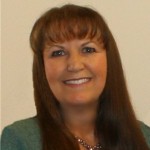
 then, I wouldn’t know where to start. As I said, pictures don’t reveal eye color changes. That said, I guess that all I can do is to see how many cousins have this same trait, and which side of the family they come from. Of course, even if we find out it is from one or the other, the fact remains that we would then need to go to the next couple and see which side of that line it comes from. I’m sure you, like I agree that this is a daunting task, with very little chance of getting very far, but as is the case with most of genealogy…you just have to put the knowledge you do have out there, and see what will come from it.
then, I wouldn’t know where to start. As I said, pictures don’t reveal eye color changes. That said, I guess that all I can do is to see how many cousins have this same trait, and which side of the family they come from. Of course, even if we find out it is from one or the other, the fact remains that we would then need to go to the next couple and see which side of that line it comes from. I’m sure you, like I agree that this is a daunting task, with very little chance of getting very far, but as is the case with most of genealogy…you just have to put the knowledge you do have out there, and see what will come from it.
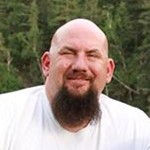
 I was talking with my nephew, Steve Spethman the other day, when he mentioned that he knew very little about his grandfather, Fredrick Albert Spethman. Being a genealogy buff, I simply could not resist the challenge that presented. He had a picture of his grandfather, and knew that he had died in Oregon, and his grandmother’s first name, Joanne. He also knew his great grandfathers name, Patrick Spethman, as his own son, Xander Patrick was named after that grandfather. And he knew his great grandmother’s name, Meta Spethman. It was enough. I was able to find his grandparents’ marriage certificate and a little bit more information, including an index concerning his World War II service. The rest will come as it always does, as other people add what they know to what I have found out. Once this kind of search gets started, it always has a way of growing.
I was talking with my nephew, Steve Spethman the other day, when he mentioned that he knew very little about his grandfather, Fredrick Albert Spethman. Being a genealogy buff, I simply could not resist the challenge that presented. He had a picture of his grandfather, and knew that he had died in Oregon, and his grandmother’s first name, Joanne. He also knew his great grandfathers name, Patrick Spethman, as his own son, Xander Patrick was named after that grandfather. And he knew his great grandmother’s name, Meta Spethman. It was enough. I was able to find his grandparents’ marriage certificate and a little bit more information, including an index concerning his World War II service. The rest will come as it always does, as other people add what they know to what I have found out. Once this kind of search gets started, it always has a way of growing.
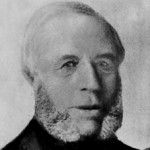 That information was exciting for me, as Steve is pretty special to me, but then I got a big surprise. Steve’s 3rd great grandfather, Johann Joachim Daniel Spethmann, who Americanized his name to John, was born in Oldenburg, Germany. To many people I don’t suppose that this information would be so interesting, but my husband, Bob Schulenberg’s family has a long history in Oldenburg. It dates back beyond the time of Steve’s grandfather’s birth, and the Schulenberg family is still there today. I’m not saying that the Spethmann family and the Schulenberg family are related, although it is entirely possible, but considering the fact that Oldenburg wasn’t that large a town back then, it is quite likely that they knew each other. Maybe, they were even friends.
That information was exciting for me, as Steve is pretty special to me, but then I got a big surprise. Steve’s 3rd great grandfather, Johann Joachim Daniel Spethmann, who Americanized his name to John, was born in Oldenburg, Germany. To many people I don’t suppose that this information would be so interesting, but my husband, Bob Schulenberg’s family has a long history in Oldenburg. It dates back beyond the time of Steve’s grandfather’s birth, and the Schulenberg family is still there today. I’m not saying that the Spethmann family and the Schulenberg family are related, although it is entirely possible, but considering the fact that Oldenburg wasn’t that large a town back then, it is quite likely that they knew each other. Maybe, they were even friends.
I realize that if you go back far enough, you will find that we are all related, as we all came from Adam and Eve, but as time has progressed, it is harder and harder to come up with the exact connections that exist between each of us. I have been able to find connections for Bob and me, on two sides of his family to one of mine. We are 10th cousins on one side and 12th cousins on another. That is such a strange thought to me, and now to find 
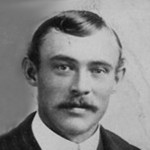 such a close connection with Steve’s family has added another interesting twist to the family history, and one that I am eager to explore. Time will tell if we are related in a way that can easily be figured…such as a marriage, and if it is the case, my guess is that I will stumble on that information, as I have in so many others, when I least expect to find such a connection. Nevertheless, finding this or any other information to add to the family history is always an exciting day, and in this case, it all started with the discovery of a common birthplace.
such a close connection with Steve’s family has added another interesting twist to the family history, and one that I am eager to explore. Time will tell if we are related in a way that can easily be figured…such as a marriage, and if it is the case, my guess is that I will stumble on that information, as I have in so many others, when I least expect to find such a connection. Nevertheless, finding this or any other information to add to the family history is always an exciting day, and in this case, it all started with the discovery of a common birthplace.

